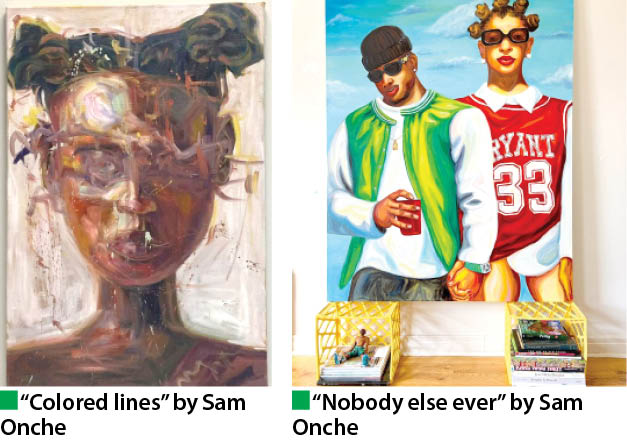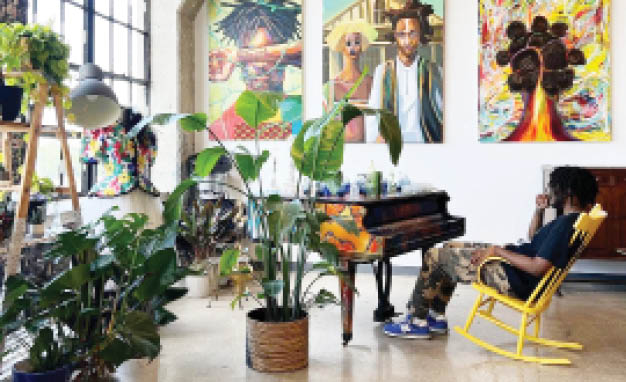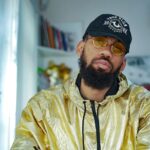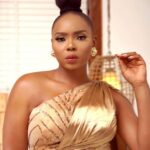Sam Onche George Jnr is a US-based digital artist and painter. In this interview with Daily Trust on Sunday, he shares his journey from a childhood immersed in music, fashion and culture to his artistic development in the U.S.
Can you tell us more about your childhood in Nigeria and how it influenced your passion for art?
My name is Sam Onche George Jnr, I was born in Nigeria (Makurdi, Benue State). My siblings, family and friends in my neighbourhood call me Jnr because I’m the last of six siblings and I was named after my grandfather. I don’t come from a family of artists but grew up surrounded by the arts which mostly came from music, fashion, cartoons, the Nigerian culture and movies. Drawing and colouring activities were more of a bonding experience for me and my siblings, as well as my friends. It would also kind of get competitive at times but it was always fun and cool. Throughout my childhood years in Nigeria, I was like a sponge absorbing the things around me and making it my own. Inspiration and influence for me at a young age came from watching my cousin’s love of fashion and styling, to my brother’s love for rap music, to the rich Nigerian culture and my love for comics, movies and world building.
How did your transition to the U.S. and your experiences with basketball shape your artistic journey?
In 2015, I moved to the US on a scholarship which was life changing for me. This meant I had to adapt to a new environment and way of living. It also meant I had a chance to learn more and grow as a person and ultimately an artist. Basketball as a sport played a big role in who I am today. It teaches you hard work, being a team player, dedication and so much more. It gave me opportunities to acquire the best education I could possibly ask for as well as experiences that I lean on in my career. I was able to attend Colby College in Maine where I played on the basketball team. With the opportunity, I honed strong foundational skills in painting from school that took my art to a whole different level. Combining my experiences from Nigeria, the US and the opportunity with sports, I was able to start building my own identity.
You work in both traditional oil painting and digital art. What do you enjoy about each medium, and how do you decide which to use for a particular project?
I work both traditionally with oils, acrylics and pastel, as well as digitally. I really love both mediums as they have pros and cons. When I work traditionally, I love playing with textures and patterns, I also enjoy the physical presence the work can give to viewers. I can play with size this way from large canvases to small intimate moments in smaller canvases. I also love the mistakes surprisingly and problem solving which is easy to fix when working digitally instead of traditionally. As for digital art, I love how I can work anywhere at any point in time. I use an iPad when working digitally and I usually carry it along with me. Digital medium allows me to put down ideas quickly without having to worry about the drying time of the paint or mistakes. When it comes to illustration work for books and magazines it’s easy to make revisions and experiment which I do a lot. When deciding what medium to use, factors like time, purpose of the work, presence and honestly sometimes, I just go with my intuition.

- ‘You lied; you sacked me’ – Fatima Mai Zogale replies former boss
- Nollywood mourns Zulu Adigwe
Can you walk us through your creative process, from conceptualisation to completion?
My process starts and ends with music. Music helps me convey my feelings and emotions which shows in the works that I make. When I have the right song playing, I then move to the planning stage. Each project requires a different approach with planning. For instance, for book illustrations, cover art or posters, I have to listen or read the material I’m creating work on. This helps me get the gist and immerse myself in the world of the project. After this, I start making sketches and putting the pieces together. It’s kind of like a puzzle sometimes. After sketches are done, there’s a selection process. At this stage, I heavily critique the ideas I’ve come up with to pick the best option for the project. When I’m set on the best sketch, I then move to colour which is the most exciting part of the process. At this point, there’s so many possibilities with how the final painting can look. Also, there’s personal projects and moments where I just go in fully without a strategy and follow my instincts. It all comes down to trusting the process.
Your art features themes from daily life, cultural evolution, fashion, and music. Can you describe how these themes interplay and shape the overall message of your work?
I talked about my love and interest in fashion, culture, music and the daily experience which over the years with practice and honest observation. I’ve been able to fuse under one umbrella. In the beginning, it wasn’t easy but ultimately I realised that I want people to enjoy looking at my work. I want to be able to talk about the beautiful things of life and the serious things in a way that’s not degrading, harmful or exploitative. I want to represent myself and the characters in my work in the most beautiful way possible.
What significance does Ankara fabric hold in your portraits, and how does it connect to your heritage?
My use of Ankara fabrics has layers of significance and symbolism. The fabrics represent my culture and community. The patterns represent and celebrate beauty, pride and identity. The multi colours celebrate diversity. Just like Nigeria has a lot of languages and cultures, the world is full of different peoples. Combining different patterns in a single painting speaks about my hopes for a world where we are all together.
Could you share a specific story or memory that has deeply influenced one of your paintings?
People may not realise but I see myself in my paintings and I find ways to subtly or fully share my experiences in my art. One moment that I can speak on that shaped my work was my experience with racism. Up until coming to the US, everyone I spoke with and knew were people that looked and talked like me. Coming to the US, I noticed people that looked like me didn’t occupy spaces of power or were faced with inequality. I remember being in classes in college and being the only person of colour. At the peak of the BLM movement some years ago, seeing negative imagery of people of colour made me realise I needed to pivot. I started mostly representing people of colour in my work beautifully and proudly as my way of pushing for positivity and hope.
How do you approach the balance between abstraction and representation in your vibrant oil paintings?
I think I’ve kind of mastered the way of marrying abstraction and representation in my work. I don’t push for realism or total abstraction, I push for a grey area where the two meet. This way it’s exciting and liberating for me to work without constraints.
You aim to unite people through your art to foster a sense of cultural appreciation and hope for the future. How do you envision your art contributing to broader conversations about race, identity, and equality?
I’ve had the opportunity to see first-hand the impact my work has on people in relation to topics of race, identity and equality. It’s always humbling and inspiring when I’m able to connect with people. I hope to keep inspiring the next generation to take on this journey just like those that have come before me have done until world equality is not a concept but a reality.
Can you discuss your exploration of Afrofuturism and how it manifests in your work?
My interest in Afrofuturism was birth from my love of sci-fi movies and literature. I was always curious why people of colour weren’t involved in conversations of the distant future filled with possibilities and scientific innovations. This made me start creating afro futuristic work with characters of colour surrounded with themes that relate to the future such as tech designs, futuristic clothing, vibrant colours and design etc.
What challenges have you faced as an artist, and how have you overcome them?
Just like life, art has its challenges. When I first started, I didn’t have a clear voice and recognisable style and it was very frustrating. There’s also the fear of being labelled as a starving artist and failing. It took me a little while to figure out that you have to be confident in your own skill and ability as well as your experiences which are unique. I think once I cleared the doubt and just believed in myself and my work ethic I started to blossom.
You often listen to afro beat and hip hop while painting. How does music influence your creative process and the mood of your work?
For me, music is the core of my creativity. It helps me channel my emotions, ideas and thoughts on paper, canvas or screen. It’s kind of like seasoning in food. Without seasoning there’s no flavour.
Looking ahead, what are your aspirations and goals for the future of your artistic career?
Looking ahead, I hope to take my work as far as the stars. That might sound arrogant but it’s how much I love the work that I do. This dream is all I’ve ever wanted since I was a kid drawing in my little sketchbooks in Nigeria. Once God put me on that path I never want to look back.

 Join Daily Trust WhatsApp Community For Quick Access To News and Happenings Around You.
Join Daily Trust WhatsApp Community For Quick Access To News and Happenings Around You.


